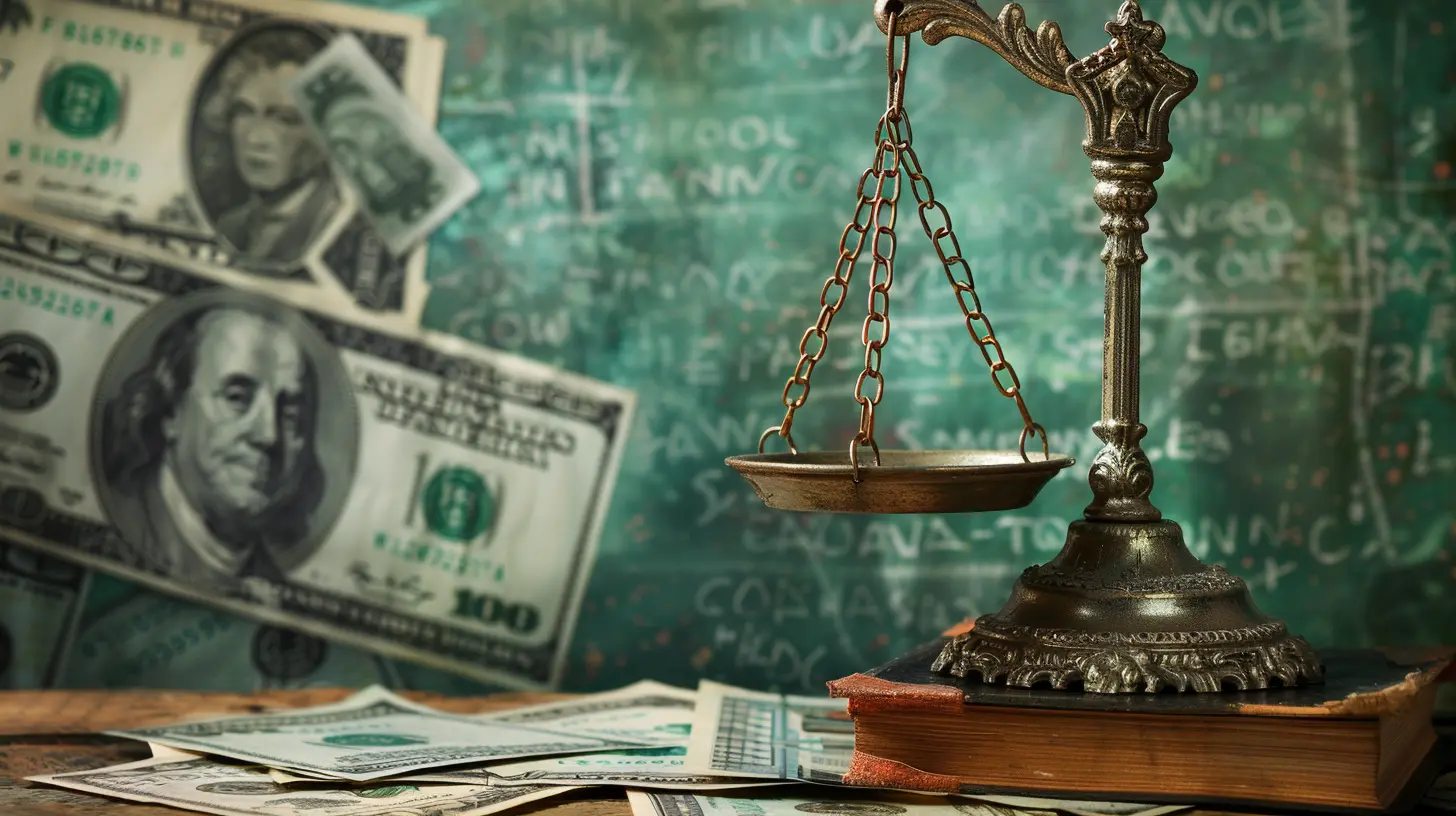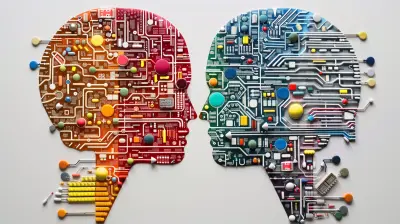The Intersection of Higher Education Policy and Student Debt
8 September 2025
Higher education has long been seen as a ticket to a better life—more job opportunities, higher salaries, and increased social mobility. But here’s the hard truth: that very ticket has been getting a lot more expensive over the years. And as tuition climbs, so does the mountain of student debt. It’s a reality that millions of graduates and current students face every day.
So, what’s driving this crisis? At the heart of it is the complex dance between higher education policy and the rising burden of student loans. Sounds complicated? It is—but don’t worry, we’re about to break it all down piece by piece.
Let’s unpack how policies—both past and present—have shaped, and in many ways complicated, the student debt situation. Plus, we’ll take a look at where things are headed and what can actually be done to fix it.
How We Got Here: A Quick History of Student Debt
First, a little background. Student loans weren’t always part of the college experience. In fact, federal student loan programs really kicked off in the 1960s with the Higher Education Act of 1965. This law allowed the federal government to start backing student loans, making college more accessible.Sounds pretty decent, right? And it was… at first.
But as time went on, tuition started creeping up. Then it started skyrocketing. Meanwhile, wages pretty much stayed flat. That growing gap meant students had to borrow more just to stay in the game—and policies weren’t exactly keeping up.
The True Cost of College Today
It’s no secret that college is expensive. But just how expensive?According to the College Board, the average cost for an in-state student at a public four-year college in the U.S. is over $10,000 a year. Private colleges? Think $40,000 and up. And that’s just tuition—we’re not even talking about housing, food, or books.
Now imagine paying for that with a part-time job. Not possible, right? That’s why more than 43 million Americans are carrying student loan debt totaling over $1.7 trillion.
And here’s the kicker—student loans aren’t just big; they’re also sticky. Unlike credit card debt or car loans, you can’t easily discharge student loans in bankruptcy. It’s a financial burden many carry for decades.
Federal Policies That Shaped Student Debt
So how did we get so tangled up in this mess? A lot of it comes down to policies that—while often well-intentioned—don’t always work out the way policymakers planned.1. Loan Availability and Easy Access
The more money available to borrow, the more colleges can charge. That’s the “Bennett Hypothesis,” named after former U.S. Secretary of Education William Bennett. Basically, schools know students can take out federal loans, so they don’t feel the pressure to keep prices down.Is this happening? It's debated. But the theory definitely makes you stop and think.
2. Lack of Oversight on For-Profit Colleges
Some for-profit schools have taken advantage of weak regulations to enroll students, take their loan money, and provide sub-par education in return. Many students leave these institutions with mountains of debt and little to show for it.Recent changes under different presidential administrations have swung the pendulum between tighter oversight and deregulation—leaving students caught in the crossfire.
3. Income-Driven Repayment Plans
These plans were introduced to ease the burden by allowing borrowers to pay a percentage of their income. Sounds nice, right? But they’ve also led to ballooning balances due to interest accrual. Many people end up paying for years and still owe more than they borrowed.
What Role Does State Policy Play?
It’s not just the big wigs in Washington making the rules. States play a huge role in shaping higher ed.Back in the day, states used to heavily subsidize public colleges, keeping tuition low. But over the last few decades, many have cut back on that support. Guess who’s making up the difference? Yep, the students.
This shift from public funding to student revenue is a major driver of the current debt crisis.
The Politics of Debt Forgiveness
Let’s talk about the elephant in the room—student loan forgiveness.Some say canceling student debt would unleash a wave of relief and economic growth. Others argue it’s unfair to those who already paid off their loans or didn’t go to college at all.
Reality check: Both sides have valid points.
Forgiveness plans have become a hot topic in national politics. Some propose wiping it all out, while others push for targeted relief based on income or profession. But no matter what, any large-scale forgiveness program comes with both benefits and drawbacks.
How Policy Impacts Underrepresented Students
Here’s something that doesn’t get talked about enough—student debt doesn’t hit everyone equally.Students of color, especially Black borrowers, are more likely to take on debt and struggle with repayment. Women also hold a disproportionate share of student loans.
Why? A combination of factors: wage gaps, wealth gaps, and systemic inequalities baked into both education and employment.
If we’re serious about addressing student debt, we need policies that acknowledge and address these disparities head-on.
The Private Loan Problem
Not all student loans are federal. Private loans are a different beast—fewer protections, higher interest rates, and generally less flexibility.While federal policy may not directly control private loans, it can create incentives (or disincentives) that affect how much students need to rely on them. And when federal loans aren’t enough, students turn to these riskier options.
The Push for Free College: Is It The Answer?
One of the most talked-about solutions to student debt is making college free—at least public community colleges or four-year universities.Supporters say this levels the playing field, reduces debt, and boosts graduation rates. Critics worry about the cost to taxpayers and whether it would really solve the root problems.
Still, states like New York and Tennessee have launched their own versions of tuition-free college—and early data suggests it’s making a difference.
Tech and Innovation: Can They Help?
EdTech and online learning platforms are changing the way we think about education. Could this be the way out?Maybe.
Online degrees can be cheaper and more flexible, but they also raise questions about quality and equity. Plus, they often rely heavily on self-motivation—something not every student finds easy.
Still, technological innovation holds real promise, especially if paired with smart policy.
Practical Solutions That Could Actually Work
Alright, enough doom and gloom. What can we actually do to bridge the gap between higher ed policy and student debt?Let’s break down some potential fixes:
1. Increase State and Federal Funding
More public investment could lower the cost of college and reduce reliance on debt. It’s that simple—and that hard.2. Improve Oversight of Educational Institutions
Hold schools accountable for graduation rates, job placement, and loan repayment outcomes.3. Expand Loan Forgiveness Programs
Targeted loan forgiveness for teachers, nurses, and public servants can make a big impact. But it has to be easy to navigate—many people don’t even know they qualify.4. Rethink How We Measure Success
Instead of just pushing four-year degrees, let's also promote vocational training, apprenticeships, and other affordable educational pathways.5. Cap Interest Rates and Reform Repayment
Make loan terms more borrower-friendly. Cap interest rates. Offer better income-based repayment options that don’t leave people in debt forever.Final Thought: Let's Not Turn Education Into a Lifetime Bill
At the end of the day, we need to ask ourselves one big question:Is the goal of higher education to empower people? Or to burden them with decades of debt?
The current system is clearly broken—but that doesn’t mean it’s beyond repair. Policies got us into this mess, and better policies can help get us out. It will take bold thinking, bipartisan action, and a real understanding of what students are going through.
Because let’s face it—education should be a ladder, not a ball and chain.
all images in this post were generated using AI tools
Category:
Education PolicyAuthor:

Monica O`Neal
Discussion
rate this article
1 comments
Adrian Gates
Ah, student debt and higher education policy: the original odd couple! One’s in it for the long haul, and the other just wants to bail—sounds like my last group project!
September 9, 2025 at 10:26 AM

Monica O`Neal
Haha, that's a clever analogy! The relationship between student debt and higher education policy definitely needs better collaboration for meaningful change.


